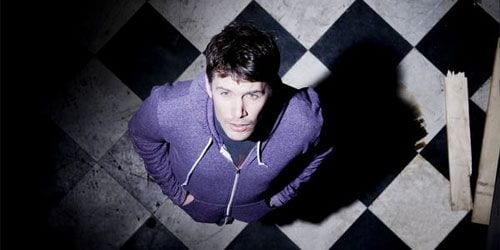
Kristoffer Ragnstam’s good nature was an immediately appealing part of the Swedish drummer/songwriter’s 2007 debut, Sweet Bills. And because of this, you tended to forgive if the album careened hectically through choruses that seemed just a bit too familiar. What was already clear back then was Ragnstam’s easy familiarity with both the studio and the little twistings of instrumentation that generate and sustain interest (in one memorable instance, he uses “Twinkle Twinkle Little Star” to build the promise of a new love).
Well, the (not so surprising) news is that Ragnstam begins his sophomore record, Wrong Side of the Room, right where he left off. “Nothing bores me more than an over-rated poet / With an acoustic guitar, and way too much to say”, Ragnstam declares early on the record. In accordance with this attitude, he offers as much variety and as much narrative lyrical insight as an album can comfortably handle. Ragnstam’s characters may worry, as with many pop protagonists, that he is “no longer in vogue”, but he may be the first to articulate it so succinctly.
It’s not just this gift for an outsider’s levity Ragnstam brings to the table. There are some moments of utterly sparkling pop on Wrong Side of the Room. “Disco Fiasco” is Jamie Lidell-by-way-of-Peter Bjorn and John joyous ’70s soul, with a chorus that could be in a commercial, perhaps; “Sorry for Being the Man of 1000 Questions” combines playful drum-machine and whispered vocal delivery into a Suburban Kids with Biblical Names-style electropop song; the outsider country/pop of “I Heard About my Own Death on the Radio” channels Boy Least Likely To and Lacrosse in equal measure, to sweet effect. In case it’s not clear from these descriptions, the musical language shifts drastically across the album. The material’s mostly strong enough for us not to worry about this. But it does prevent Ragnstam from establishing a strongly recognisable “voice” (a similar problem hindered Sweet Bills somewhat).
The trouble is, exuberance alone doesn’t create memorable pop music. Ragnstam piles pianos on electric guitars on fast tempi on layered vocals, and though this creates a pleasing clatter, the complexity also occasionally clouds the accessibility of Ragnstam’s ideas. The first single, “Swing That Tambourine”, is one of these narrow misses. As elsewhere, he overcomes an awkward juxtaposition of individually appealing studio sounds with a drawn-out chorus that suits a single’s singalong-ability. The singer-songwriter may be going for something like Pelle Carlberg’s intelligent pop, and though the results still smell faintly of Beck, that’s not entirely bad. As I said, it’s difficult to fault pop exuberance without seeming spoilsport.
There’s no doubt that Ragnstam is an intelligent engineer and songwriter. It’s just that, sometimes, these awkward, not-quite-overwhelming flaws stick out, out of proportion with the general quality of his songs. Moreover, Ragnstam has some really great lines — one that struck me was, “I promise I get even sadder in neon”, inviting someone out for a night of dancing in “Disco Fiasco”. Stick with Ragnstam, and you can easily find little things like this to love about his music. I guess I just wish it wasn’t so difficult to dig through to find these.

![Call for Papers: All Things Reconsidered [MUSIC] May-August 2024](https://www.popmatters.com/wp-content/uploads/2024/04/all-things-reconsidered-call-music-may-2024-720x380.jpg)



